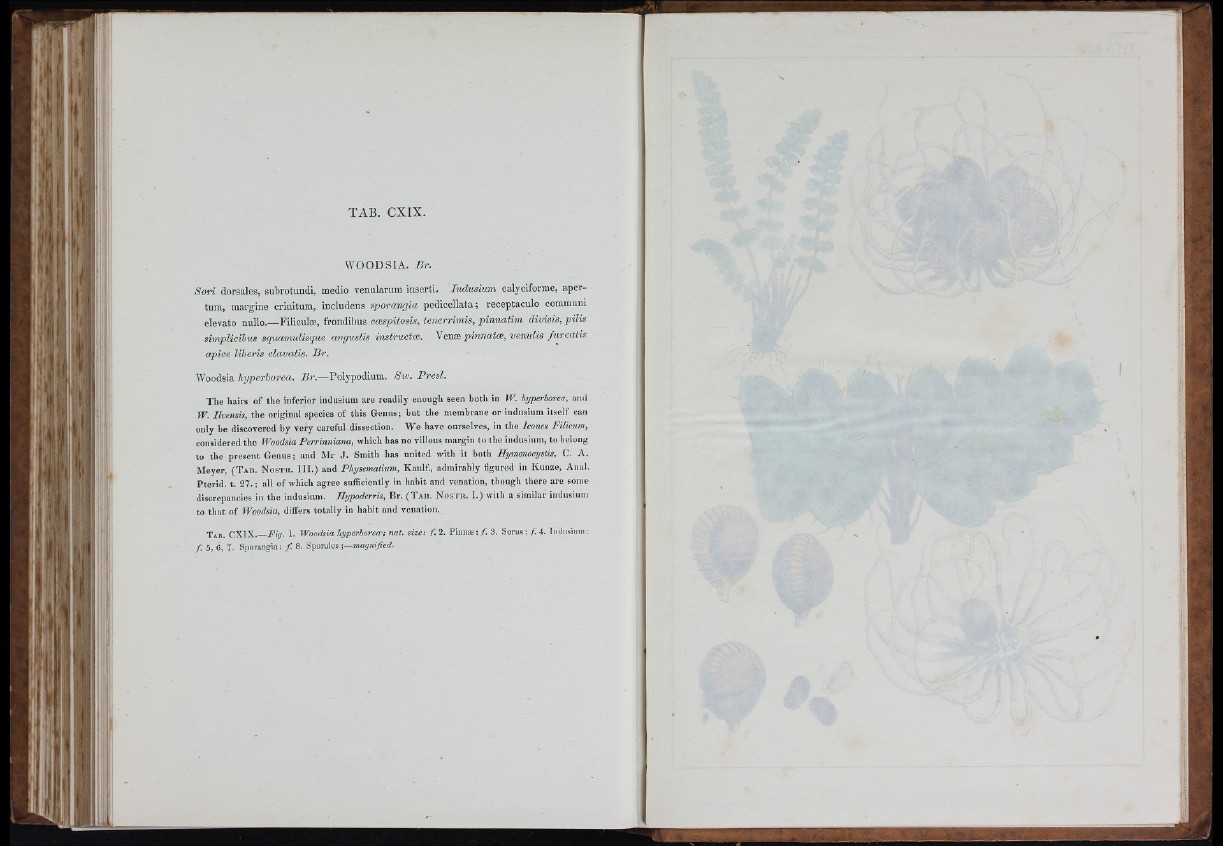
TAB. CXIX.
W O O D S IA . B r .
S o r i dorsales, subrotundi, medio venularum inserti. In d u s ium calyciforme, apertum,
margine crinitum, includens sporangia pedicellata; receptáculo commun!
elevato nullo.— Filiculæ, frondibus caispitosis, tenerrimis, p in n a tim d ivisis, p ilis
simplicibus squamulisque angustis instructoe. Ycnæ p in n a tæ , v enulis fu r c a tis
apice liberis clavatis. B r .
Woodsia hyperborea. B r .— Polypodium. Sw . P r e s l.
The hairs of the inferior indusium are readily enough seen both in W. hyperborea, aud
W. Ilvensis, the original species of this Genus; but tlie membrane or indusium itself can
only be discovered by very careful dissection. We have ourselves, in tlie leones Filicum,
considered the Woodsia Perrinniana, which has no villous margin to the indusium, to belong
to the present Genus; and Mr J . Smith has united with it both Hymenocystis, C. A.
Meyer, ( T a b . N o s t r . I I I .) and Physematium, Kaulf., admirably figured in Kunze, Anal.
Pterid. t. 27. ; all of which agree sufficiently in habit and venation, tliougli there are some
discrepancies in the indusinm. Hypoderris, Br. ( T a b . N o s t k . I.) with a similar indusinm
to tliat of Woodsia, differs totally in liabit and venation.
T ab. CXIX.—Kg. 1. Woodsia hyperborea: nat. size: f.2 . Pinnæ:/. 3. Sorus: / 4. Indnsium;
f. S, C, 7. Sporangia: f. 8. Sporules ;—magnyfcd.
il l